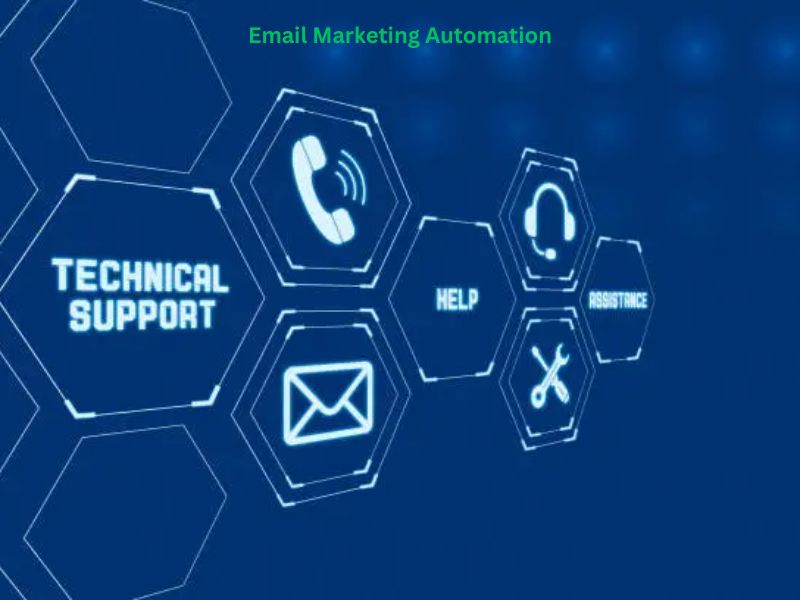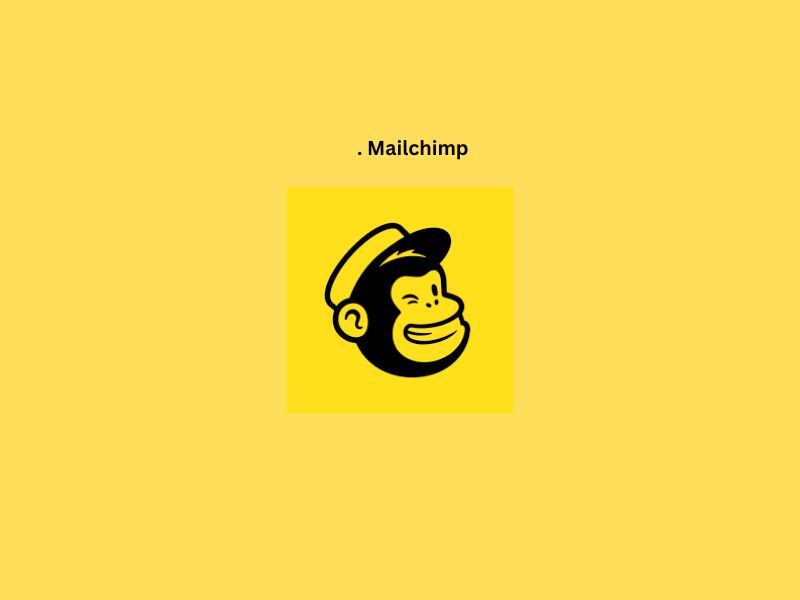Email Marketing Automation isn’t just a buzzword—it’s the backbone of modern digital marketing. Imagine sending personalized messages to thousands of subscribers without lifting a finger, nurturing leads while you sleep, and watching your conversion rates soar. The best part? You don’t need a hefty budget to get started. In fact, some of the most powerful tools in the industry offer robust free plans that cater to startups, small businesses, and even established brands looking to optimize their strategies.

As we step into 2025, the landscape of email automation continues to evolve, with AI-driven personalization, multi-channel workflows, and deeper integrations becoming standard. But with countless options available, how do you choose the right tool for your needs? Whether you’re a solopreneur building your first subscriber list or a growing business aiming to scale, this guide breaks down the top 10 free email marketing automation tools that deliver exceptional value without costing a dime.
Why Email Marketing Automation Matters
Email marketing automation empowers businesses to send targeted, timely, and relevant messages to their audience based on predefined triggers, behaviors, or schedules. According to recent studies, companies using automation generate twice as many leads as those relying solely on manual campaigns . Here’s why it’s non-negotiable in 2025:
- Personalization at Scale: AI-powered tools analyze user behavior to deliver hyper-personalized content, boosting open rates by up to 25% and click-through rates by 15% .
- Efficiency: Automate repetitive tasks like welcome emails, abandoned cart reminders, and lead nurturing sequences.
- ROI-Driven: For every $1 spent on email marketing, businesses earn $36 in return—a 3,500% ROI .
Top 10 Free Email Marketing Automation Tools
1. Kit (Formerly ConvertKit)
Ideal For: Bloggers, creators, and newsletter-focused businesses.
Free Plan Highlights:
- Up to 10,000 subscribers.
- Unlimited emails and landing pages.
- Sell digital products and subscriptions.
Limitations: Only 1 visual automation and 1 email sequence; requires displaying other newsletters in its Creator Network.
Why It Stands Out: Kit’s generous subscriber limit and monetization features make it perfect for content creators building a loyal audience. Its tagging system enables flexible subscriber management, while the landing page editor helps capture leads without a website .
2. MailerLite
Ideal For: Small businesses and beginners.
Free Plan Highlights:
- 1,000 subscribers.
- 12,000 emails per month.
- Access to automations, landing pages, and basic reporting.
Limitations: Structural templates are basic; no advanced segmentation.
Why It Stands Out: MailerLite’s intuitive drag-and-drop editor and user-friendly interface make it a top choice for those new to automation. Its free plan includes critical features like autoresponders and web forms, alongside email support .
3. Brevo (Formerly Sendinblue)
Ideal For: Budget-conscious businesses seeking advanced features.
Free Plan Highlights:
- 100,000 subscribers.
- 9,000 emails monthly (300/day).
- Marketing automation, CRM, and basic reporting.
Limitations: Daily sending cap; Brevo’s branding appears in emails.
Why It Stands Out: Brevo offers an unparalleled combination of high subscriber limits and pro features like automation workflows and CRM integration. It’s ideal for businesses ready to scale without upfront costs .
4. Omnisend
Ideal For: Ecommerce stores.
Free Plan Highlights:
- 500 emails monthly to 250 contacts.
- Unlimited subscribers.
- Segmentation, automation, and website tracking.
Limitations: Small sending allowance; limited to ecommerce use cases.
Why It Stands Out: Omnisend excels with ecommerce-specific automation (e.g., cart abandonment emails) and multi-channel support (SMS, social media). Its free plan includes all advanced features, making it a steal for online stores .
5. HubSpot
Ideal For: Businesses wanting an all-in-one CRM and marketing solution.
Free Plan Highlights:
- 1 million subscribers.
- 2,000 emails monthly.
- CRM integration, web forms, and analytics.
Limitations: Low email-sending limit; HubSpot branding present.
Why It Stands Out: HubSpot’s free CRM seamlessly integrates with email automation, enabling personalized campaigns based on contact behavior. It’s perfect for businesses focused on lead nurturing .
6. Mailchimp

Ideal For: Beginners and small businesses.
Free Plan Highlights:
- 500 subscribers.
- 1,000 emails monthly (500/day).
- Basic reporting and templates.
Limitations: No automation or advanced segmentation; support limited to first 30 days.
Why It Stands Out: Mailchimp’s brand recognition and user-friendly interface make it a popular choice for simple campaigns. However, its free plan is less generous than competitors .
7. Zoho Campaigns
Ideal For: Users already in the Zoho ecosystem.
Free Plan Highlights:
- 2,000 contacts.
- 6,000 emails monthly.
- CRM integration and modern templates.
Limitations: Automation reserved for paid plans.
Why It Stands Out: Zoho’s integration with its suite of business tools makes it a cohesive choice for organizations leveraging Zoho CRM .
8. SendPulse
Ideal For: Multichannel marketers.
Free Plan Highlights:
- 500 subscribers.
- 15,000 emails monthly.
- Web push notifications and transactional emails.
Limitations: Basic autoresponders only.
Why It Stands Out: SendPulse stands out with its multi-channel approach, combining email with push notifications and SMS marketing .
9. EmailOctopus
Ideal For: Simplicity and affordability.
Free Plan Highlights:
- 2,500 subscribers.
- 10,000 emails monthly.
- Integration with Zapier for workflow automation.
Limitations: Stats retained for only 30 days.
Why It Stands Out: EmailOctopus offers a refreshingly straightforward interface and integrates with external tools via Zapier, making it ideal for users seeking simplicity .
10. AWeber
Ideal For: Small businesses and bloggers.
Free Plan Highlights:
- 500 subscribers.
- 3,000 emails monthly.
- Landing pages and simple automation.
Limitations: Limited to one list; phone support available but restricted.
Why It Stands Out: AWeber’s free plan includes landing pages and phone support, which is rare among free tools .
Comparison Table: Free Email Marketing Automation Tools
| Tool | Free Subscribers | Monthly Emails | Standout Features | Ideal For |
|---|---|---|---|---|
| Kit | 10,000 | Unlimited | Monetization, landing pages | Creators, bloggers |
| MailerLite | 1,000 | 12,000 | Drag-and-drop editor, automation | Small businesses |
| Brevo | 100,000 | 9,000 | CRM, automation, transactional emails | Scaling businesses |
| Omnisend | Unlimited | 500 | Ecommerce automation, SMS | Online stores |
| HubSpot | 1 million | 2,000 | CRM integration, analytics | All-in-one users |
| Mailchimp | 500 | 1,000 | Brand recognition, templates | Beginners |
| Zoho Campaigns | 2,000 | 6,000 | Zoho ecosystem integration | Zoho users |
| SendPulse | 500 | 15,000 | Multichannel marketing | Multichannel marketers |
| EmailOctopus | 2,500 | 10,000 | Zapier integration, simplicity | Simplicity seekers |
| AWeber | 500 | 3,000 | Landing pages, phone support | Small businesses |
How to Maximize Free Email Marketing Automation Tools
1. Prioritize Personalization
Use dynamic content and behavioral triggers to tailor emails. For instance, Brevo’s AI-driven personalization can increase conversions by 30% .
2. Leverage Segmentation
Split your audience based on demographics, behavior, or engagement levels. Tools like Omnisend allow dynamic segmentation for targeted campaigns .
3. Automate Key Workflows

Set up automated sequences for welcome emails, cart abandonment, and re-engagement. HubSpot’s free CRM integration simplifies this process .
4. Avoid Spam Traps
Monitor engagement and remove inactive subscribers after 3 unopened emails to maintain deliverability .
5. Integrate with Other Tools
Use Zapier or native integrations to sync your email tool with CRM, ecommerce platforms, or analytics services .
FAQ
Q1: Can I really use these tools for free without hidden costs?
Yes, but be mindful of limitations like sending caps or branding. Upgrading unlocks advanced features like unlimited automation or removed branding.
Q2: Which tool is best for ecommerce?
Omnisend leads with ecommerce-specific features like abandoned cart emails and product recommendations .
Q3: How does AI enhance email automation?
AI optimizes send times, personalizes content, and predicts user behavior, boosting open rates by 22% and click-through rates by 18% .
Q4: Are free tools suitable for large audiences?
Brevo and HubSpot offer high subscriber limits (100,000+), making them ideal for large lists .
Conclusion
Email marketing automation is no longer a luxury reserved for enterprises with deep pockets. The tools listed above prove that powerful automation is accessible to everyone—whether you’re a budding creator, a small business owner, or a marketer aiming to scale. From Kit’s unparalleled subscriber limit to Omnisend’s ecommerce prowess, each platform offers unique strengths tailored to different needs.
As you explore these tools, remember that the key to success lies not just in the software but in your strategy: personalize relentlessly, automate wisely, and always prioritize your audience’s needs. Ready to transform your email campaigns? Try one of these free tools today and watch your engagement soar!
CTA: Loved this guide? Share your experiences with email automation tools in the comments below, or check out our in-depth review of paid email marketing platforms to scale your efforts further!
